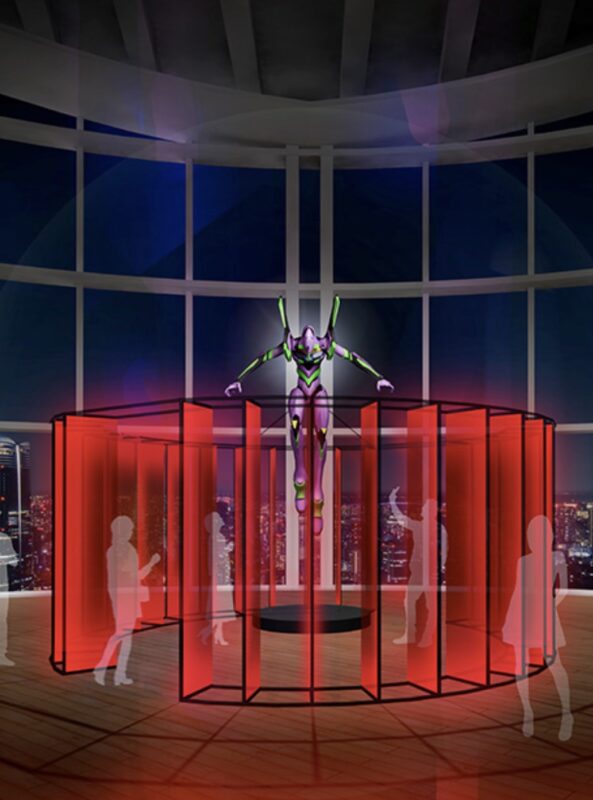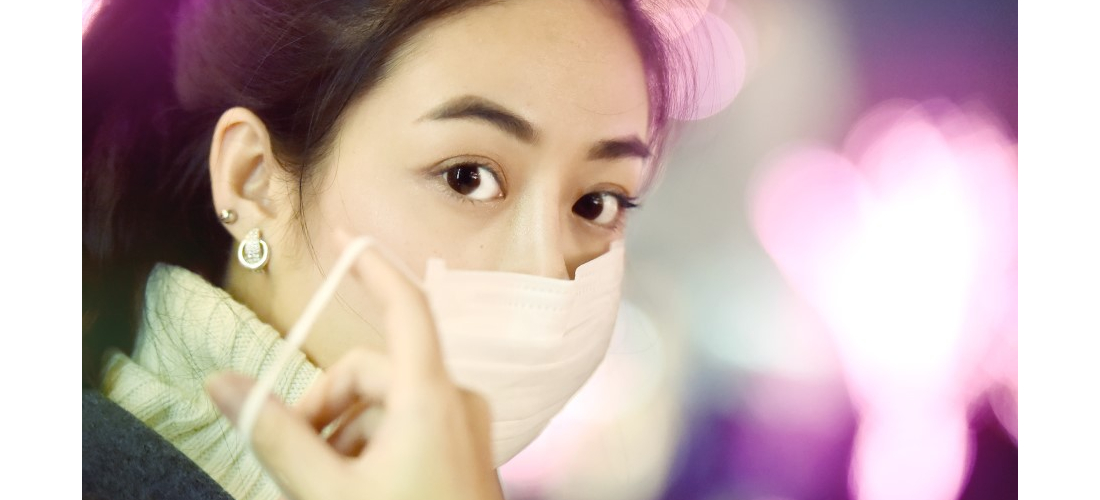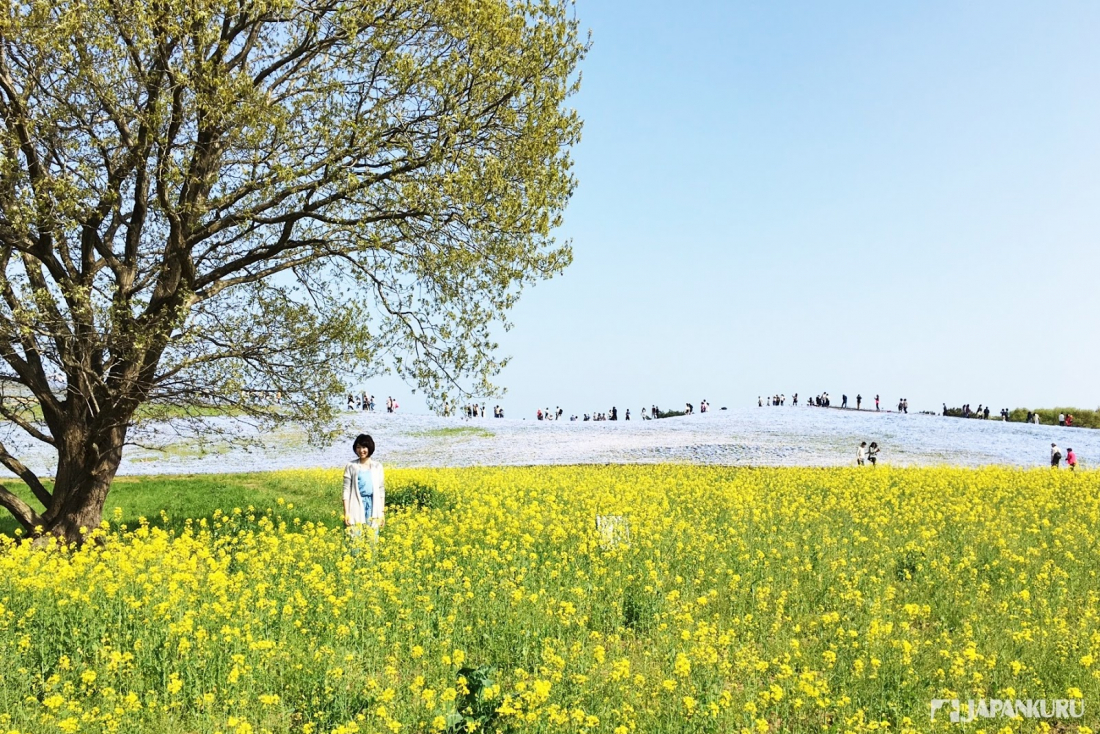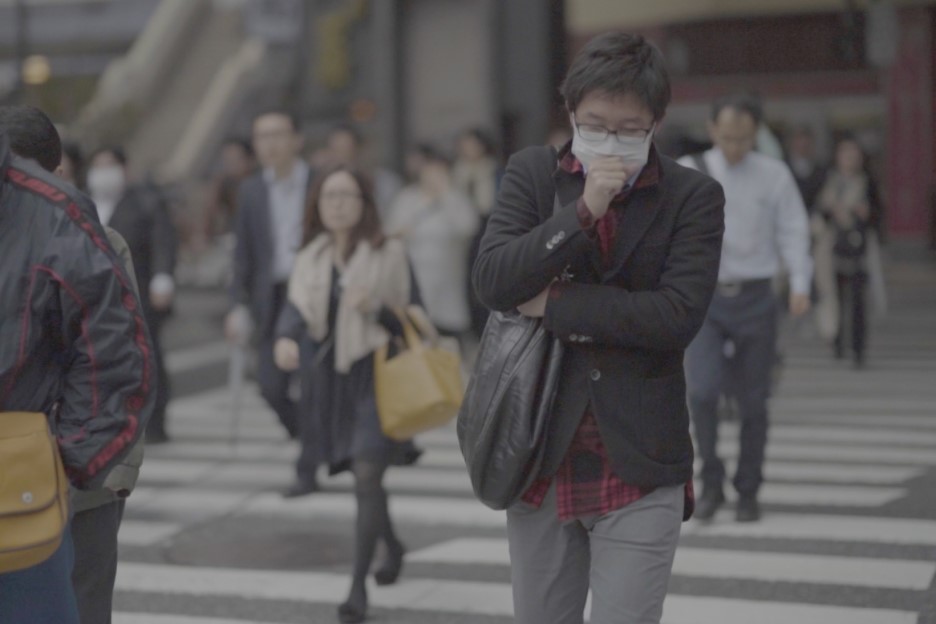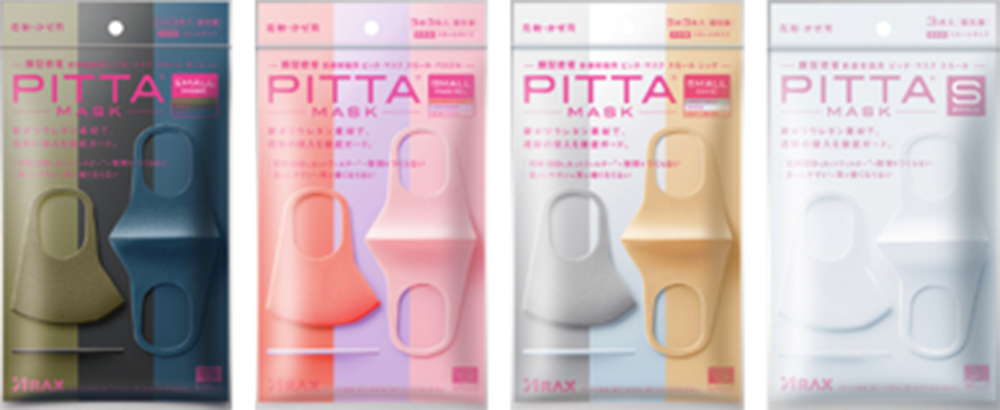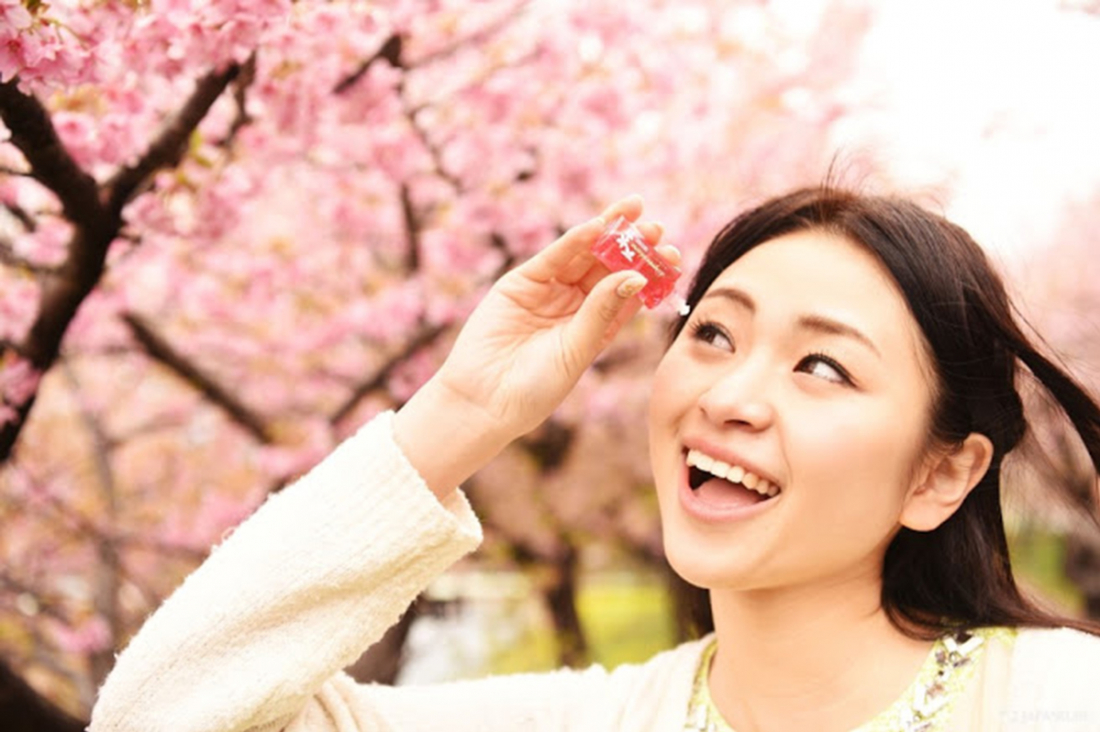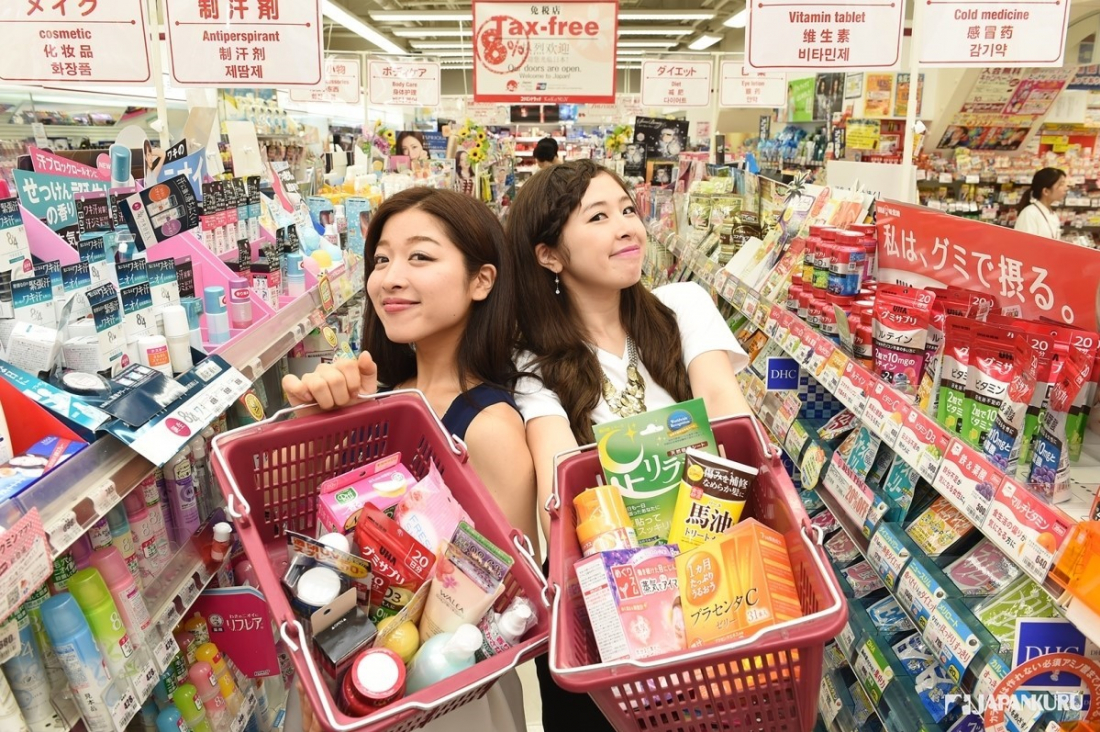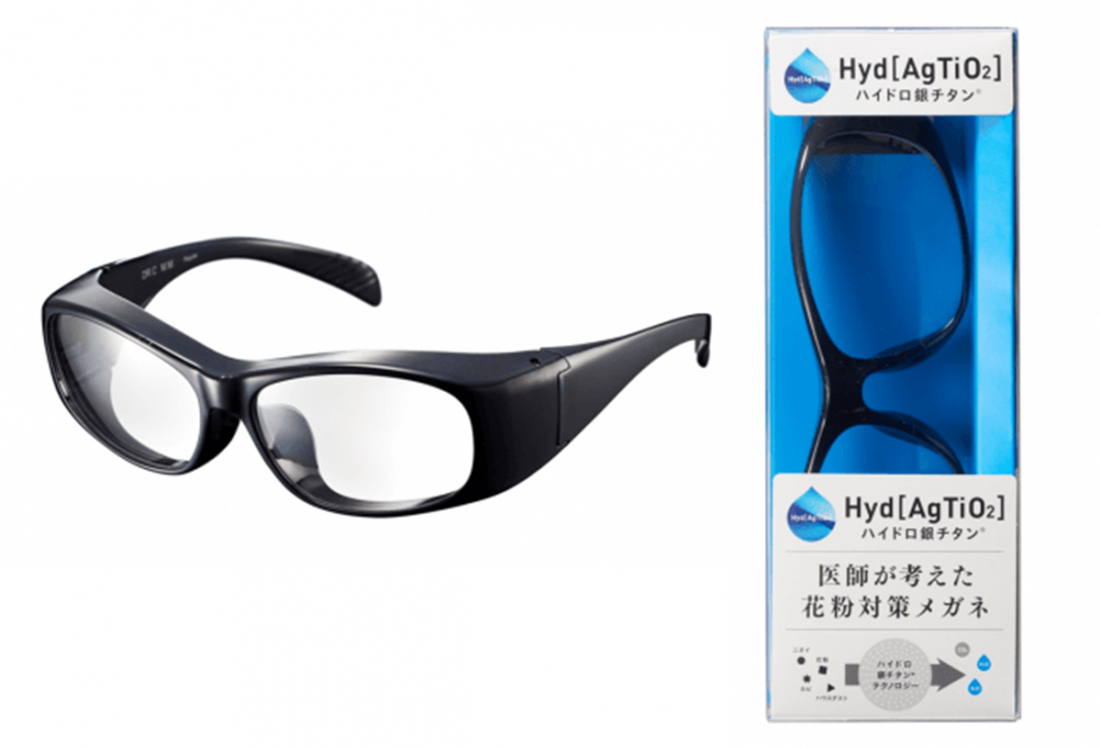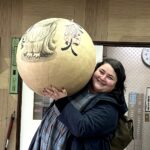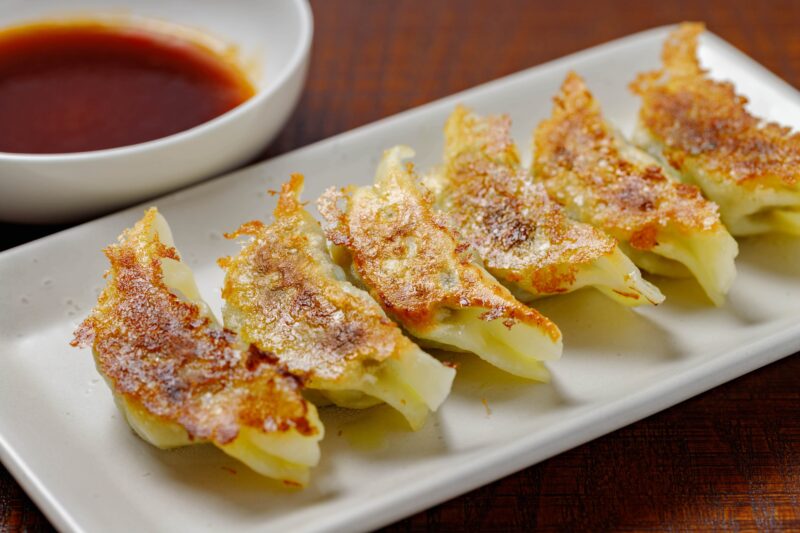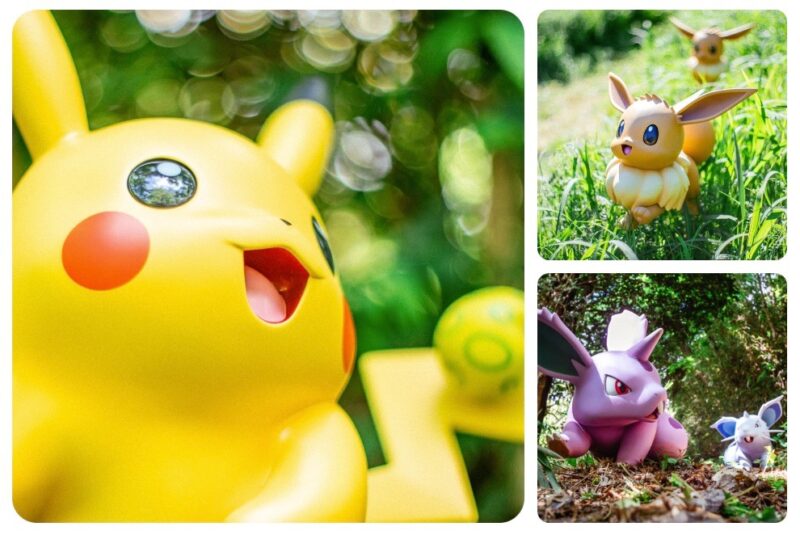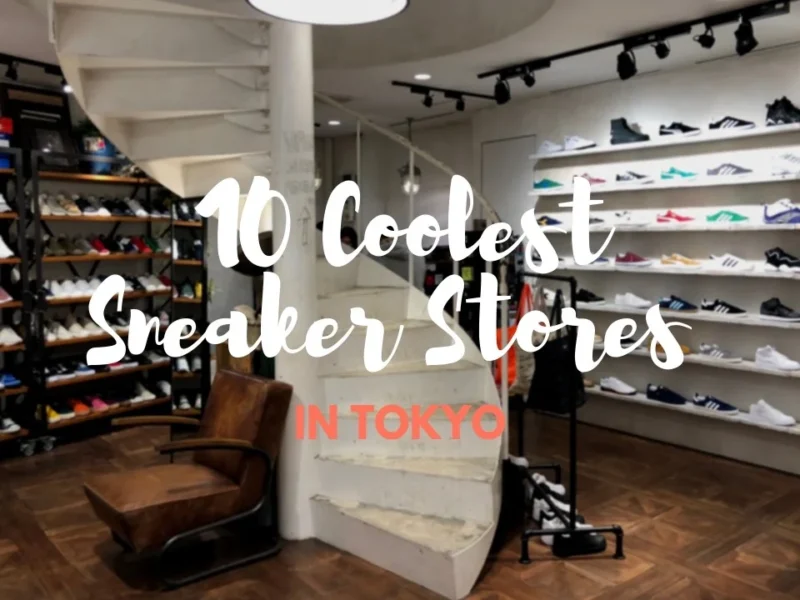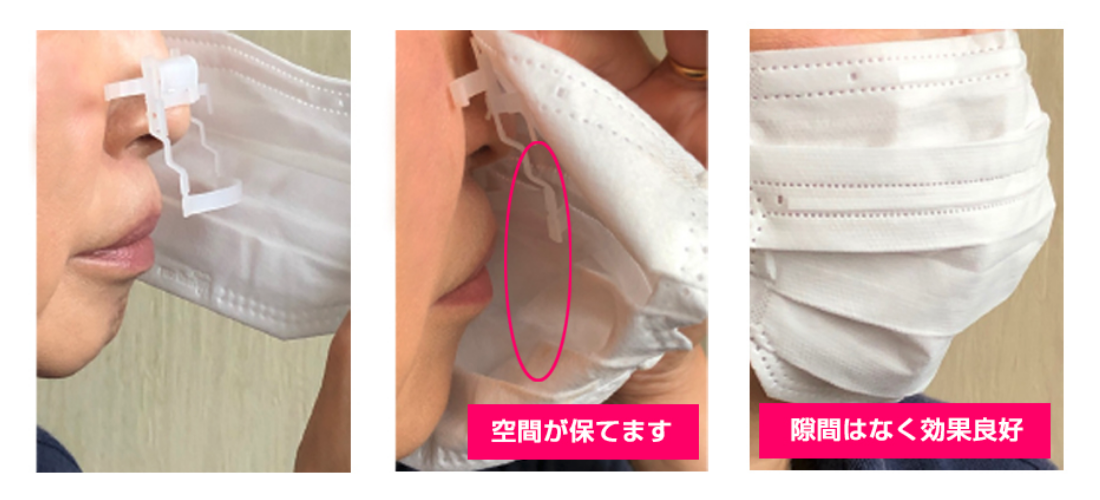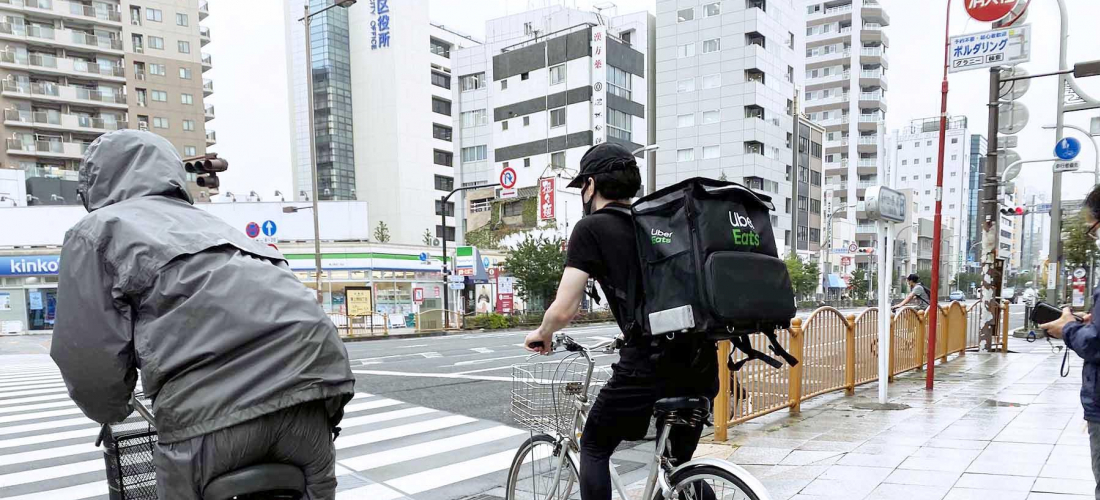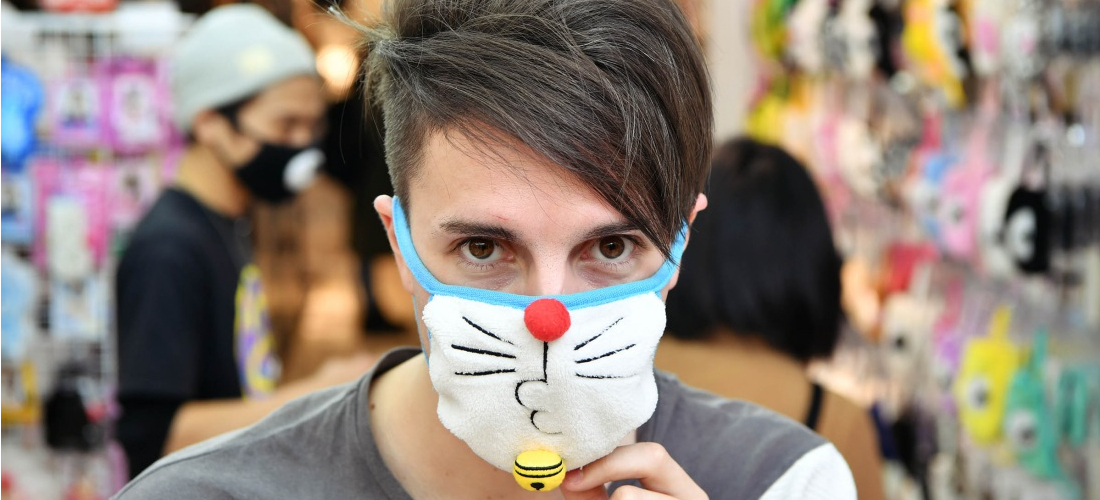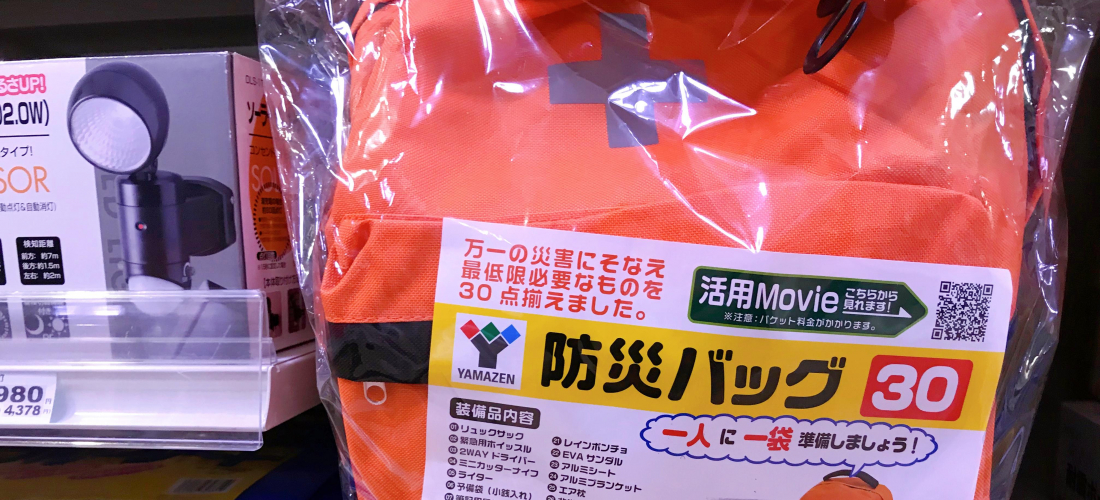CONTENTS
You step off the plane into the bright halls of Narita Airport, excited to get started on your Tokyo travels and your trip through Japan right as cherry blossom season begins, and — ACHOO! That spring pollen hits you like a ton of bricks, and the symptoms aren’t the most convenient when traveling. What do you do now, to stay comfortable without sacrificing a moment of sightseeing fun? Wear a mask? Take some allergy medicine? Stay in your hotel forever and ever? (Hopefully not!) Here are the top tips from Japan.
Hay Fever / Seasonal Allergies / Kafunsho (花粉症) in Japan
Kafunsho, the Japanese word for pollen allergies, is an inevitable topic of conversation every spring in Japan. Coming from other countries, a few members of the JAPANKURU team had never even experienced the symptoms of these seasonal allergies until arriving in Japan. Once we got here, though… Due to some well-intentioned but accidentally misery-inducing post-WWII reforestation policies, Japan planted huge numbers of Japanese cypress and Japanese cedar trees all over the country, and after a few decades of growth, those trees started pushing waves of pollen into the air we all have to breathe every day in Japan. And every spring, once temperatures start regularly reaching 10°C (50°F), we are reminded just how much pollen we're breathing in, by the really unfortunate results…
The Symptoms of Seasonal Allergies
As we write this article we are quite possibly at the peak of COVID-19 (coronavirus) worries, so it's understandable if you start feeling a little unwell in Japan and aren't sure if it's an annoyance or an emergency. Common symptoms for allergies include:
・a stuffy nose and clogged sinuses
・a decreased sense of smell
・itchy, watery eyes, an itchy throat, and itchy skin
・lots of sneezing
・a runny, drippy nose
Shortness of breath and general fatigue do overlap with COVID-19, but guides to identifying coronavirus point to a dry cough, a high fever, and NOT a runny nose. As unpleasant as it is to be a snotty mess, it's probably a good sign.
Combatting Kafunsho
The most effective way to avoid the effects of allergies is to never go outside. But that's not much fun, is it? You've probably got an itinerary packed with temples and and parks and lovely walks through Tokyo, Kyoto, and beyond! Of course the citizens of Japan have things to do every day, too, so these are some of the most commonly recommended options available for relieving the symptoms:
Masks
While masks haven't really caught on in the West, they're a pretty standard everyday-wear item in Japan, especially throughout cold and flu season, and then whenever the trees release pollen and kafunsho takes over. Cute character masks for kids, masks marketed towards young women claiming to improve skin quality, scented masks and more… they're everywhere, and the varieties never end in Japan.
At the moment, standard masks are sold out throughout the country, because while coronavirus is not an airborne disease, people are still buying them in bulk as an attempt to avoid catching COVID-19.
Image Source: PR Times
But the best masks to avoid pollen aren't the standard ones, anyway, or so some very successful marketing claims! These especially sleek-looking masks claim to filter out 99% of the pollen from the air you breathe, and can supposedly be washed and reused. Worth a try, right? (Unless you're like some of us, who can't stand the feeling of any masks at all.)
Eye Drops
Again, there are a LOT of different eye drop varieties for sale in Japan. Plenty of them cater to the same contact-wearing crowd you might find anywhere in the world, but there are also an awful lot of eye drop products in Japan that contain unique ingredients. Lots of them create a cooling effect on the eye's surface, which either relieves itchy eyes, or full-on wakes you up like a cup of coffee, depending on the product. In the end, these special additions might just irritate your eyes even more, though, so your milage may vary. You can also look for eye drops very specifically targeted at helping with allergies, which might be more effective.
Medicine (Antihistamines)
Of course, you can take your basic allergy meds as well. If antihistamines do the job for you back home, there's no reason why they shouldn't work over in Japan as well! Check in with your doctor before your trip if you think you might need to count on medication to keep the sniffles at bay.
Other Ways to Quell the Kafunsho
Image Source: PR Times
Interestingly, one of the top tips you'll hear from people in Japan is "just wear your glasses, everybody"! Forget contacts, putting on a pair of glasses (or sunglasses) creates a physical barrier, and it certainly does a much better job of keeping the pollen out of your eyes than wearing no eye protection at all! You might even find special goggles at local department stores (or even 100 yen stores) made specifically for this purpose.
Another issue is just how much pollen sticks with you throughout the day, so our final tip – wear smooth clothing! As ridiculous as it might sound, all that irritating pollen really grabs ahold of that fuzzy sweater you love so much, and then can go on to get right into your eyes and nose later on. Wearing a rain jacket or a trench coat – really any outerwear with a smooth surface – might just keep you sneeze-free and happy as you tour Japan this kafunsho season!
Let us know about your time in Japan and all your experiences with Japanese kafunsho (and spring travel!) on twitter, instagram, and facebook!
Half a lifetime ago I came to Japan for a semester abroad... and I never left. I guess I really like the place! I spent my first few years in Japan living in the middle of nowhere, so I'd love to hear your Tokyo recommendations via Japankuru's social media accounts!
COMMENT
FEATURED MEDIA
VIEW MORE 
A New Tokyo Animal Destination: Relax & Learn About the World’s Animals in Japan
#pr #japankuru #anitouch #anitouchtokyodome #capybara #capybaracafe #animalcafe #tokyotrip #japantrip #카피바라 #애니터치 #아이와가볼만한곳 #도쿄여행 #가족여행 #東京旅遊 #東京親子景點 #日本動物互動體驗 #水豚泡澡 #東京巨蛋城 #เที่ยวญี่ปุ่น2025 #ที่เที่ยวครอบครัว #สวนสัตว์ในร่ม #TokyoDomeCity #anitouchtokyodome

Shohei Ohtani Collab Developed Products & Other Japanese Drugstore Recommendations From Kowa
#pr #japankuru
#kowa #syncronkowa #japanshopping #preworkout #postworkout #tokyoshopping #japantrip #일본쇼핑 #일본이온음료 #오타니 #오타니쇼헤이 #코와 #興和 #日本必買 #日本旅遊 #運動補充能量 #運動飲品 #ช้อปปิ้งญี่ปุ่น #เครื่องดื่มออกกำลังกาย #นักกีฬา #ผลิตภัณฑ์ญี่ปุ่น #อาหารเสริมญี่ปุ่น

도쿄 근교 당일치기 여행 추천! 작은 에도라 불리는 ‘가와고에’
세이부 ‘가와고에 패스(디지털)’ 하나면 편리하게 이동 + 가성비까지 완벽하게! 필름카메라 감성 가득한 레트로 거리 길거리 먹방부터 귀여움 끝판왕 핫플&포토 스폿까지 총집합!
Looking for day trips from Tokyo? Try Kawagoe, AKA Little Edo!
Use the SEIBU KAWAGOE PASS (Digital) for easy, affordable transportation!
Check out the historic streets of Kawagoe for some great street food and plenty of picturesque retro photo ops.
#pr #japankuru #도쿄근교여행 #가와고에 #가와고에패스 #세이부패스 #기모노체험 #가와고에여행 #도쿄여행코스 #도쿄근교당일치기 #세이부가와고에패스
#tokyotrip #kawagoe #tokyodaytrip #seibukawagoepass #kimono #japantrip

Hirakata Park, Osaka: Enjoy the Classic Japanese Theme Park Experience!
#pr #japankuru #hirakatapark #amusementpark #japantrip #osakatrip #familytrip #rollercoaster #retrôvibes #枚方公園 #大阪旅遊 #關西私房景點 #日本親子旅行 #日本遊樂園 #木造雲霄飛車 #히라카타파크 #สวนสนุกฮิราคาตะพาร์ค

🍵Love Matcha? Upgrade Your Matcha Experience With Tsujiri!
・160년 전통 일본 말차 브랜드 츠지리에서 말차 덕후들이 픽한 인기템만 골라봤어요
・抹茶控的天堂!甜點、餅乾、飲品一次滿足,連伴手禮都幫你列好清單了
・ส่องมัทฉะสุดฮิต พร้อมพาเที่ยวร้านดังในอุจิ เกียวโต
#pr #japankuru #matcha #matchalover #uji #kyoto #japantrip #ujimatcha #matchalatte #matchasweets #tsujiri #말차 #말차덕후 #츠지리 #교토여행 #말차라떼 #辻利抹茶 #抹茶控 #日本抹茶 #宇治 #宇治抹茶 #日本伴手禮 #抹茶拿鐵 #抹茶甜點 #มัทฉะ #ของฝากญี่ปุ่น #ชาเขียวญี่ปุ่น #ซึจิริ #เกียวโต

・What Is Nenaito? And How Does This Sleep Care Supplement Work?
・你的睡眠保健品——認識「睡眠茶氨酸錠」
・수면 케어 서플리먼트 ‘네나이토’란?
・ผลิตภัณฑ์เสริมอาหารดูแลการนอน “Nenaito(ネナイト)” คืออะไร?
#pr #japankuru #sleepcare #japanshopping #nenaito #sleepsupplement #asahi #睡眠茶氨酸錠 #睡眠保健 #朝日 #l茶胺酸 #日本藥妝 #日本必買 #일본쇼핑 #수면 #건강하자 #네나이토 #일본영양제 #อาหารเสริมญี่ปุ่น #ช้อปปิ้งญี่ปุ่น #ร้านขายยาญี่ปุ่น #ดูแลตัวเองก่อนนอน #อาซาฮิ

Japanese Drugstore Must-Buys! Essential Items from Hisamitsu® Pharmaceutical
#PR #japankuru #hisamitsu #salonpas #feitas #hisamitsupharmaceutical #japanshopping #tokyoshopping #traveltips #japanhaul #japantrip #japantravel

Whether you grew up with Dragon Ball or you just fell in love with Dragon Ball DAIMA, you'll like the newest JINS collab. Shop this limited-edition Dragon Ball accessory collection to find some of the best Dragon Ball merchandise in Japan!
>> Find out more at Japankuru.com! (link in bio)
#japankuru #dragonball #dragonballdaima #animecollab #japanshopping #jins #japaneseglasses #japantravel #animemerch #pr

This month, Japankuru teamed up with @official_korekoko to invite three influencers (originally from Thailand, China, and Taiwan) on a trip to Yokohama. Check out the article (in Chinese) on Japankuru.com for all of their travel tips and photography hints - and look forward to more cool collaborations coming soon!
【橫濱夜散策 x 教你怎麼拍出網美照 📸✨】
每次來日本玩,是不是都會先找旅日網紅的推薦清單?
這次,我們邀請擁有日本豐富旅遊經驗的🇹🇭泰國、🇨🇳中國、🇹🇼台灣網紅,帶你走進夜晚的橫濱!從玩樂路線到拍照技巧,教你怎麼拍出最美的夜景照。那些熟悉的景點,換個視角說不定會有新發現~快跟他們一起出發吧!
#japankuru #橫濱紅磚倉庫 #汽車道 #中華街 #yokohama #japankuru #橫濱紅磚倉庫 #汽車道 #中華街 #yokohama #yokohamaredbrickwarehouse #yokohamachinatown

If you’re a fan of Vivienne Westwood's Japanese designs, and you’re looking forward to shopping in Harajuku this summer, we’ve got important news for you. Vivienne Westwood RED LABEL Laforet Harajuku is now closed for renovations - but the grand reopening is scheduled for July!
>> Find out more at Japankuru.com! (link in bio)
#japankuru #viviennewestwood #harajuku #omotesando #viviennewestwoodredlabel #viviennewestwoodjapan #비비안웨스트우드 #오모테산도 #하라주쿠 #日本購物 #薇薇安魏斯伍德 #日本時尚 #原宿 #表參道 #japantrip #japanshopping #pr

Ready to see TeamLab in Kyoto!? At TeamLab Biovortex Kyoto, the collective is taking their acclaimed immersive art and bringing it to Japan's ancient capital. We can't wait to see it for ourselves this autumn!
>> Find out more at Japankuru.com! (link in bio)
#japankuru #teamlab #teamlabbiovortex #kyoto #kyototrip #japantravel #artnews
Photos courtesy of teamLab, Exhibition view of teamLab Biovortex Kyoto, 2025, Kyoto ® teamLab, courtesy Pace Gallery

Japanese Makeup Shopping • A Trip to Kamakura & Enoshima With Canmake’s Cool-Toned Summer Makeup
#pr #canmake #enoshima #enoden #에노시마 #캔메이크 #japanesemakeup #japanesecosmetics

⚔️The Robot Restaurant is gone, but the Samurai Restaurant is here to take its place. Check it out, and don't forget your coupon!
🍣신주쿠의 명소 로봇 레스토랑이 사무라이 레스토랑으로 부활! 절찬 쿠폰 발급중
💃18歲以上才能入場的歌舞秀,和你想的不一樣!拿好優惠券去看看~
#tokyo #shinjuku #samurairestaurant #robotrestaurant #tokyotrip #도쿄여행 #신주쿠 #사무라이레스토랑 #이색체험 #할인이벤트 #歌舞伎町 #東京景點 #武士餐廳 #日本表演 #日本文化體驗 #japankuru #japantrip #japantravel #japanlovers #japan_of_insta

Japanese appliance & electronics shopping with our KOJIMA x BicCamera coupon!
用JAPANKURU的KOJIMA x BicCamera優惠券買這些正好❤️
코지마 x 빅 카메라 쿠폰으로 일본 가전 제품 쇼핑하기
#pr #japankuru #japanshopping #kojima #biccamera #japaneseskincare #yaman #dji #osmopocket3 #skincaredevice #日本購物 #美容儀 #相機 #雅萌 #日本家電 #일본여행 #면세 #여행꿀팁 #일본쇼핑리스트 #쿠폰 #일본쇼핑 #일본브랜드 #할인 #코지마 #빅카메라 #japankurucoupon
MAP OF JAPAN
SEARCH BY REGION

LATEST
VIEW MOREEVENT CALENDAR
VIEW MORE


